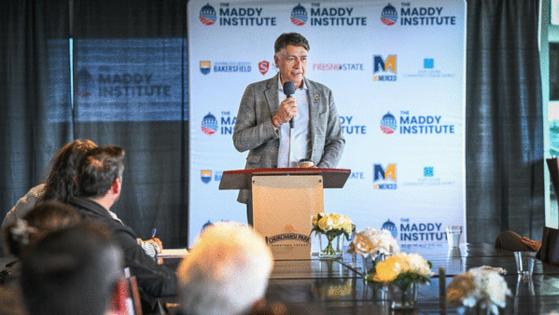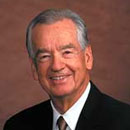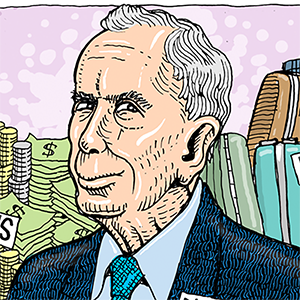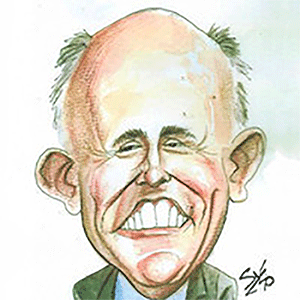Private partnership for High-Speed Rail in California? CEO says it's coming next year
Published in Business News
The head of the California High-Speed Rail Authority says the state’s $20 billion guarantee could secure the agency a first-ever partnership with private investors by mid-2026.
It’s a move that could speed construction and reduce reliance on taxpayer dollars but might also require changes to a California law that mandates first building the train from Merced-to-Bakersfield — a segment the rail authority says will lose money and is less attractive to investors than one that includes Gilroy and Palmdale.
Rail Authority CEO Ian Choudri said last week that the agency’s board will decide Nov. 20 whether to officially start vetting investors who were waiting on the train to secure long-term financial backing from the state.
“These are folks in the industry who I’ve known for decades,” he said during a visit to Fresno. “I just picked up the phone like, ‘Hey, we got the funding commitment. What’s the plan?’”
Choudri told The Fresno Bee that an investment group could use its own money to build a segment of the railway and then operate and maintain it. The rail authority would reimburse investors with state money and then later investors can draw repayment from ticket sales and other revenues from the operation of the train and its properties. The idea is that eventually operations revenue, not just tax dollars, is paying for construction, he said.
Since Choudri took over as CEO, the rail authority has pitched various ways to cut costs and accelerate construction while battling the Trump administration in court for $4 billion. The agency in September secured $20 billion from the state’s Cap-and-Invest program through 2045, which will be doled out at $1 billion per year.
Choudri told The Bee he will seek more money from California’s Legislature next year and also pursue changes to SB 198, the law that caps high-speed rail spending outside the Central Valley at $500 million. Both efforts would bolster what private investors can do for the project, he said.
The specifics of how a public-private partnership would work for high-speed rail are not yet clear and still require negotiations. But Choudri said the private sector’s “phase I” work will begin once the partners are selected next year.
“That’s where they sit with us and look at different aspects of the project we have with an understanding that what we are putting on the table is the state commitment to pay them back,” he said.
How will public-private partnerships work for high-speed rail?
Pending board approval, the rail authority will start asking interested investors and developers to provide details on the teams they can assemble — including builders, designers and operators, among other entities — to help deliver a railway segment. From there, the rail authority will begin to choose the “most qualified” group, Choudri said.
Investors would spend up-front on design and construction, and then operate and maintain the system they built. Choudri said these types of partnerships are often based on agreements that last 40-60 years.
Initially, the rail authority would reimburse investors for completed work with an “availability payment” plan using public dollars. Such plans have been used for public transit projects worldwide, including the Bretagne-Pays de la Loire high-speed line in France, which was financed and built in 5 years by the private firm Eiffage Rail Express.
Choudri said, once a privately-constructed segment is up-and-running in California, partners could also recover their investments using a “revenue risk” plan. Under that system, a percentage of revenue from ticket sales and the commercialization of the train’s right-of-way would replace some of the “availability payment” to investors.
“This is a business of: Build it, operate it, maintain the assets for a long period of time and pay yourself back with the system,” Choudri said. “The beauty of it is the burden of continuing to ask for funding from the state taxpayers is reduced.”
CEO to seek more state money, removal of rule on Central Valley focus
The CEO told The Bee he will “of course” be seeking an even larger financial commitment from the state next year and will also pursue changes to the law that requires a focus on a Merced-to-Bakersfield railway.
The rail authority pitched changes to the law, SB 198, in an August report that showed delaying construction to Merced for a Gilroy-to-Bakersfield line would be the quickest, most cost-effective way to build a profitable initial train system. The report worried Merced leaders who saw high-speed rail moving away from their region.
But Choudri told The Bee that law stands in the way of innovation and higher revenues generated by work with the private sector.
“We are bringing the private sector in and they are investing,” he said. “If you tell them, ‘Hey, just build this and don’t do more,’ they’re going to simply say, ‘Well, you’re kind of just borrowing money at that point and you can go to a bank to do that.’”
He said changing SB 198 does not mean the train will skip Merced.
“We can get it done,” he said, “but everything needs to be sequenced in the right order.”
The CEO said during last month’s board meeting he was “looking forward” to starting conversations with the Legislature in January about more state money for high-speed rail. He told The Bee a stronger state commitment could allow investors to begin construction simultaneously on multiple sections of a Gilroy-Merced-Bakersfield-Palmdale line.
“If instead of $20 billion, we have a $60 billion state commitment, then the game changes,” he said.
©2025 The Fresno Bee. Visit at fresnobee.com. Distributed by Tribune Content Agency, LLC.












Comments